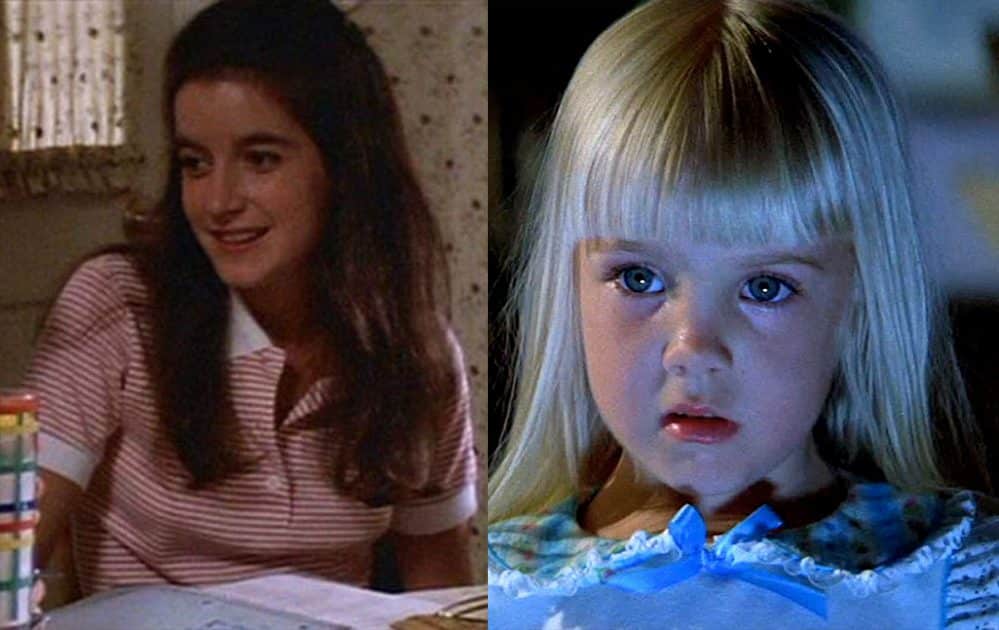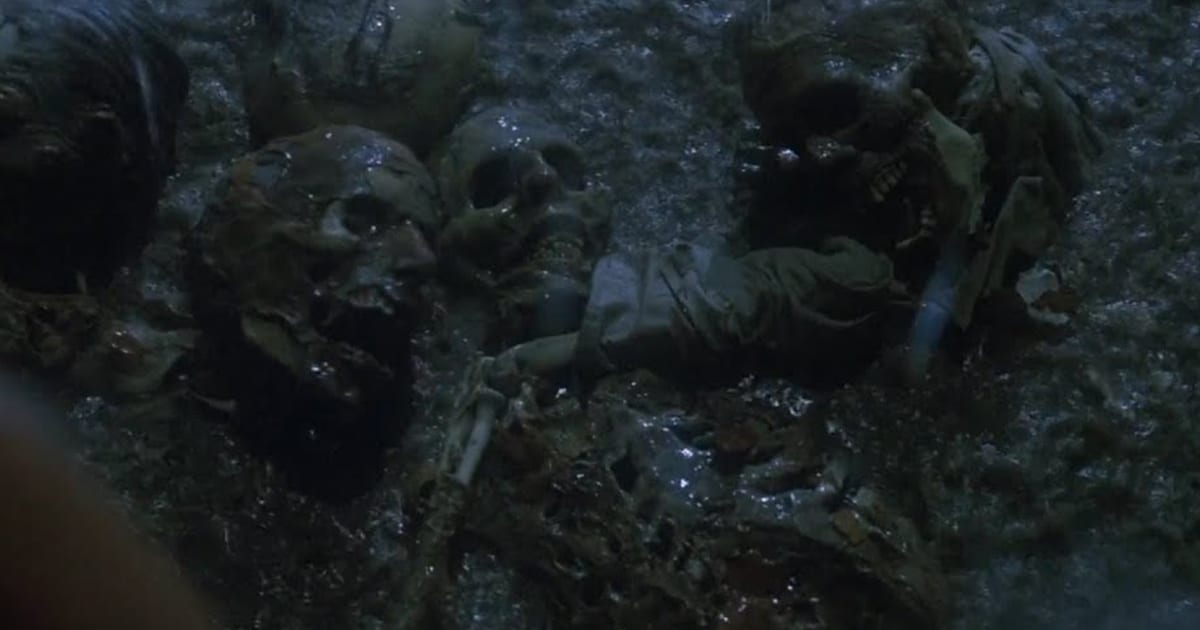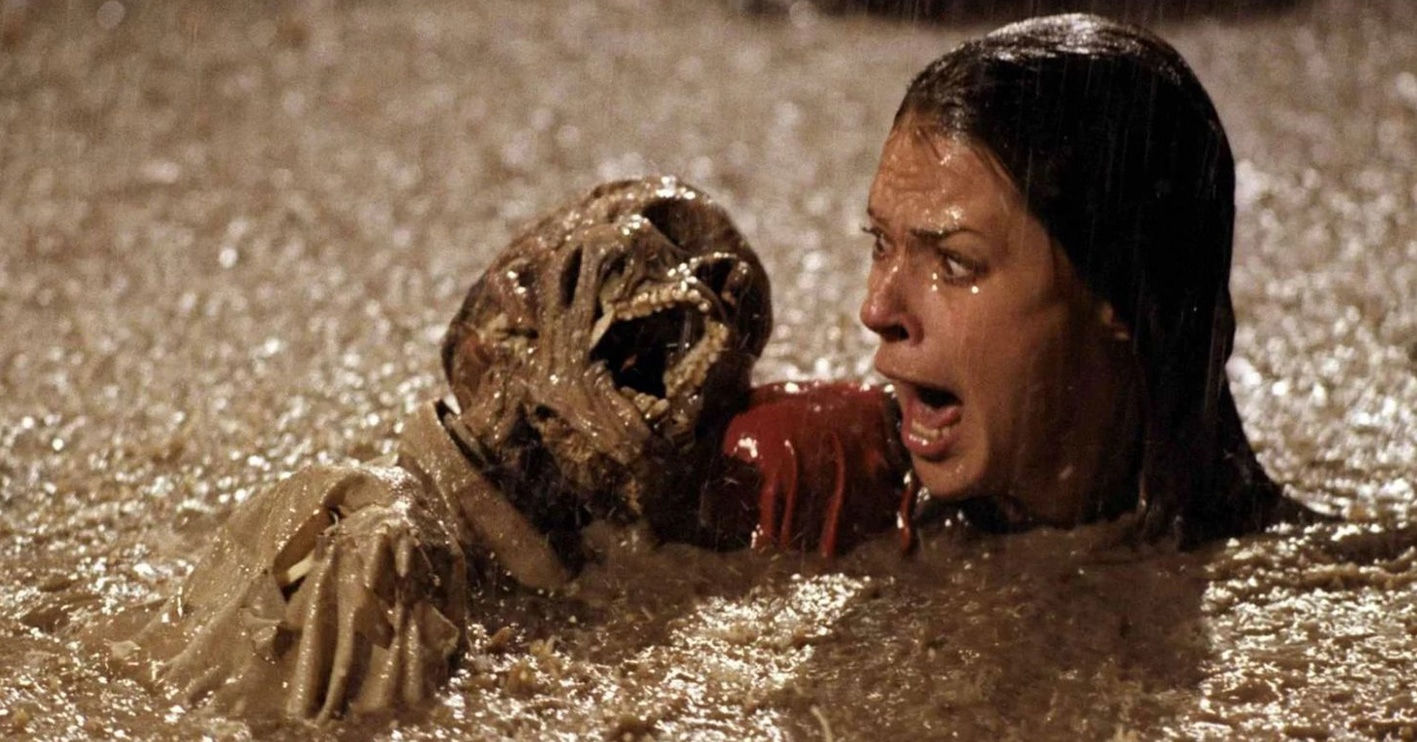1982 horror classic Poltergeist has long been surrounded by the legend of a supposed curse. In the years following Poltergeist’s release, a number of its cast, including young actors Heather O’Rourke and Dominique Dunne, died in troubling circumstances – and there are some who think that this was in part down to the film’s notorious swimming pool scene.
The story goes that, to cut costs, the filmmakers used real skeletons for Poltergeist’s pool sequence, and that the troubled souls of the dead subsequently sought revenge. Whether or not you believe in a ‘Poltergeist curse’, one thing is definitely true: those are indeed real human skeletons in the movie. More to the point, the use of real skeletons in films is more common than you might think.

Poltergeist was the brainchild of blockbuster icon Steven Spielberg, who co-wrote and produced the film, and director Tobe Hooper. Whereas most haunted house movies are set in creepy old buildings, Poltergeist is set in a newly built neighbourhood in California, where the unassuming Freeling family find themselves experiencing strange phenomena.
Steven Freeling (Craig T Nelson) works for the company that built the neighbourhood. His employer Mr Teague (James Karen) informs Steven that the houses were built on a Native American burial ground but assures Steven that all the graves were properly relocated. However, Steven eventually learns that Teague simply had the headstones moved and left the bodies where they were, prompting the family’s haunting.
Steven’s wife, Diane (JoBeth Williams), is confronted by this reality in a very visceral way in Poltergeist’s final act. The Freelings have dug a hole in their back garden in which they intend to build a swimming pool, and under heavy rain Diane falls into the flooded hole, where to her horror skeletons begin floating to the surface all around her.

During filming, Williams was initially clueless about the ‘props’ in the pool with her. Appearing on TV Land: Myths and Legends in 2008, the actress explained, “this sequence took probably four or five days to shoot. So I was in mud and goop all day every day for like four or five days with skeletons all around me [as I was] screaming.
“In my innocence and naiveté, I assumed that these were not real skeletons. I assumed that they were prop skeletons made out of plastic or rubber.”
This, the actress eventually learned, was not the case. “I found out – as did the whole crew – that they were using real skeletons, because it’s far too expensive to make fake skeletons out of rubber. And I think everybody got real creeped out by the idea of that.”

Poltergeist fans were also unsettled by this revelation, and by the late 80s it came to inform the notion of a Poltergeist curse. The main basis for talk of a curse was the deaths of actresses Heather O’Rourke, who fell ill and died before production wrapped on 1988 sequel Poltergeist III, and Dominique Dunne, who was murdered shortly after the 1982 film’s release. Also cited as part of the ‘curse’ are the deaths of Poltergeist II actors Will Sampson and Julian Beck (although both Sampson and Beck were already battling serious illnesses when cast in the 1986 sequel).
Craig Reardon, a special effects artist who worked on the film, later confirmed in court (speaking as part of a copyright lawsuit taken out against the filmmakers) that the skeletons had been genuine human remains.
Reardon told the court under oath that he “acquired a number of actual biological surgical skeletons… They’re for hanging in classrooms in study. These are actual skeletons from people. I think the bones are acquired from India.” The Poltergeist effects team then “dressed them so that they looked not like bleached, clean, bolted together skeletons but instead, disintegrating cadavers.”

Years later, Reardon explained on Cursed Films (a documentary series on streaming service Shudder) that real skeletons have been used in movies “for years and years,” citing such examples as 1931’s Frankenstein and 1959’s House on Haunted Hill. “No low budget B-film,” Reardon explains, “is going to pay anybody to sculpt a human skeleton, when all you had to do was go to a biological supply house and get a human skeleton.”
While things had changed to some extent by the 80s, this practice still remained. Special effects artist Tom Savini has confirmed that a real skeleton was used to create the Creeper in 1982’s Creepshow, and that on 1979’s Dawn of the Dead, what was thought to be a prop skeleton turned out to be genuine.
It’s also rumoured that at least some of the skulls and bones featured in Raiders of the Lost Ark and The Goonies may have been real.

For his part, Poltergeist FX artist Craig Reardon has dismissed the idea of there being any curse as a result of the production’s use of human skeletons. Reardon calls such talk “not only conceptually ridiculous, but personally offensive to me…
“It’s an insult to the memory of a very sweet little girl, Heather O’Rourke. And it’s worse than that to Dominique Dunne, who was strangled to death by her boyfriend, which had f*** all to do with a skeleton.”

